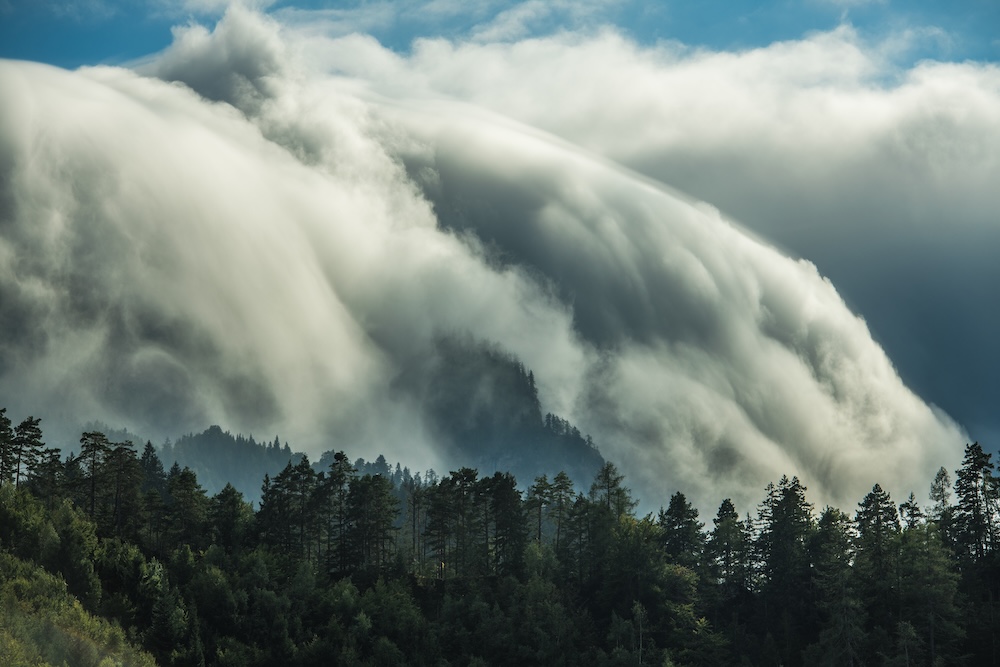Picture a river so vast it carries more water than the Amazon — but it’s invisible, flowing thousands of kilometers above your head. These are atmospheric rivers, enormous corridors of water vapor that can drench a region in days’ worth of rain or snow. Fueled by warming oceans, they’re growing more powerful, more frequent, and more disruptive — with the potential to reshape water systems, infrastructure, and disaster preparedness across the globe.
What Is an Atmospheric River?
An atmospheric river is a long, narrow band of concentrated moisture in the atmosphere, typically extending from the tropics or subtropics toward mid-latitude landmasses. They form when strong winds in the lower atmosphere channel water vapor from warm ocean areas toward cooler continental regions.
When this moist air collides with mountains or weather systems, it is forced upward, cools, and condenses — releasing intense precipitation. This can fall as rain, snow, or a mix, depending on the season and location.
How Much Water Do They Carry?
A single strong atmospheric river can transport more than 15 times the average flow of the Mississippi River — and in some cases, exceed the mighty Amazon River’s discharge. NASA and NOAA satellites track these “rivers in the sky,” revealing structures thousands of kilometers long and hundreds wide. At any given time, there are often several atmospheric rivers flowing somewhere over Earth’s oceans.
The Role of Warming Oceans
Rising global ocean temperatures — driven by climate change — are supercharging atmospheric rivers in two key ways:
- More evaporation: Warmer oceans release more water vapor into the air.
- Greater moisture capacity: Warmer air holds about 7% more water vapor per 1°C of warming, meaning each atmospheric river can carry more fuel.
This combination leads to more intense precipitation events, increasing the risk of flooding, landslides, and infrastructure failure.
Impacts: The Double-Edged Sword of Water from the Sky
Atmospheric rivers are both a blessing and a hazard.
On the positive side:
- They replenish reservoirs and aquifers.
- They contribute up to 50% of California’s annual precipitation and provide critical snowpack for the Sierra Nevada, which supplies water to millions.
- They can break drought cycles when timed and distributed evenly.
On the negative side:
- They can cause catastrophic flooding and landslides.
- They can overwhelm dams, levees, and stormwater systems.
- Consecutive events can saturate soils, increasing flood risk with each new storm.
In early 2023, California endured a series of nine atmospheric rivers over three weeks, causing more than $3 billion in damages, flooding agricultural land, and forcing thousands to evacuate.
Global Hotspots
While often associated with the U.S. West Coast’s “Pineapple Express” storms, atmospheric rivers occur worldwide:
- North America: From Alaska to Mexico’s Baja Peninsula, bringing both snowpack and flood hazards.
- Western Europe: Linked to severe UK flooding in 2014 and deadly floods in Germany in 2021.
- South America: In Chile and Peru, they bring heavy rainfall to the Andes and coastal areas.
- New Zealand: Moisture plumes from the Tasman Sea can cause rapid river rises and landslides.
Climate Change and Future Risks
A 2023 Nature Climate Change study projects that under high-emissions scenarios, the number of intense atmospheric rivers could double by the end of the century. This means more frequent back-to-back events, longer durations, and higher rainfall totals.
The risk is compounded in regions where infrastructure was designed for historical weather patterns, not the amplified storms of the future. Communities with aging dams, outdated flood controls, and inadequate emergency systems face heightened vulnerability.
Adapting to a Wetter, Riskier Future
We can’t stop atmospheric rivers, but we can adapt to their growing power:
- Improve forecasting: Modern satellite monitoring and computer models can predict landfall days in advance, giving communities time to prepare.
- Upgrade infrastructure: Reinforce levees, modernize storm drains, and raise bridge clearances.
- Capture and store excess water: Invest in groundwater recharge basins and reservoir expansion to make use of surplus rainfall.
- Reevaluate land use: Avoid new construction in floodplains and improve zoning for high-risk areas.
Final Thoughts
Atmospheric rivers are nature’s most powerful moisture delivery systems — lifelines during droughts and disasters during floods. As climate change continues to warm our oceans and atmosphere, these skyborne rivers will carry even more water. Preparing for them means treating water as both a gift and a threat, capturing it when we can and respecting its destructive potential when it comes in torrents.









Reader Interactions